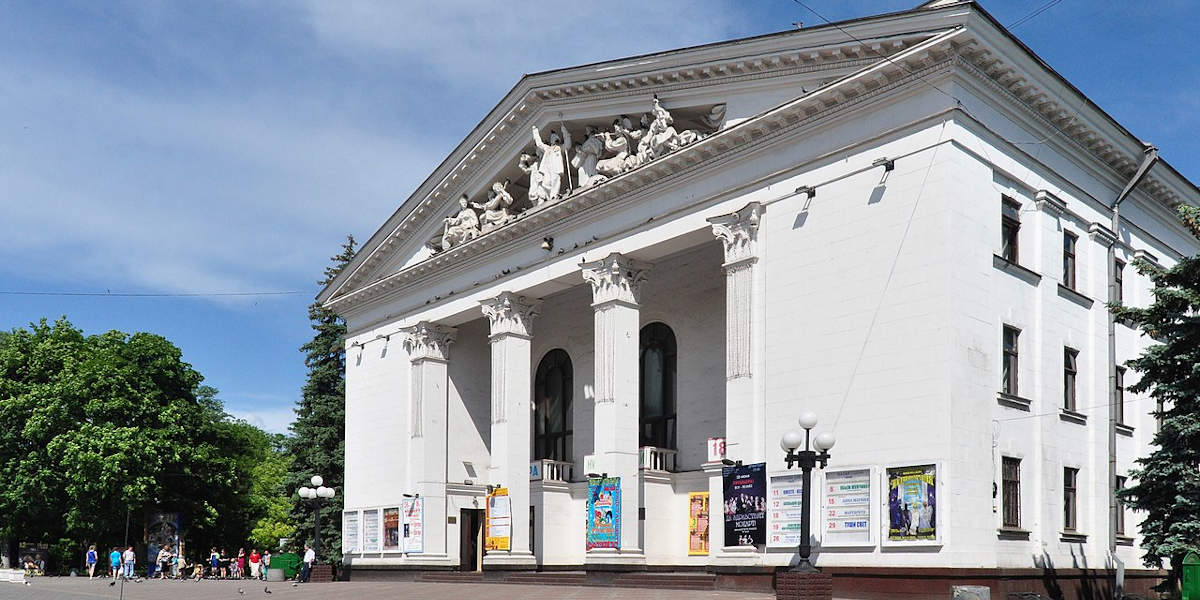As Russian tanks began rolling into Ukraine, culture workers set about shielding and fortifying the archives, collections, objects, buildings and monuments under their care. Movable collections were hastily concealed in basements or spirited away to more remote hiding places.
Artefacts and artworks generally requiring protection from elements, accidents and human touch faced new existential threat, as collateral damage and as systematically selected targets in a very real ‘culture war’.
Ihor Poshyvailo, director of Kyiv’s Maidan Museum, reported in May that at least 262 cultural objects and buildings had been damaged or destroyed in the war to date, including 94 places of worship, 16 libraries, 12 museums and four theatres.
For Olesia Ostrovska-Liuta, director of the capital’s Art Arsenal cultural centre, the Russian invasion is an ‘extreme assault on culture’, with ‘state-sponsored looting’ designed to erase some narratives, rewrite others and forge new ones alongside.
In Mariupol, the city council announced that over 2,000 exhibits were stolen during the siege. A curator at its Museum of Local History, Galina Kucher, reportedly refused Russian orders delivered at gunpoint to locate a priceless collection of Scythian gold.
Later, Russia’s official news agency broadcast the museum’s newly installed Russian director, Yevgeny Gorlachev, displaying objects ‘saved’ from the clutches of former staff, here accused of plotting to relocate them to western Ukraine. Kucher was later kidnapped. At the time of writing, her whereabouts are unknown.
Meanwhile, city officials allege that other museum workers colluded with Russian troops to steal artworks and blame Ukrainian gunfire for damage. Any paintings, medals, sabres and jewellery still intact are being engulfed by the fog of war.
Conflicts are only partly won on battlefields. They rage, too, via airways, classrooms and corridors, through the destruction or appropriation of objects with national, regional, cultural and/or historical significance.
The ability to narrate the meaning and provenance of such objects is essential to all forces with imperial ambition – just as it is central to nation-building projects everywhere. Explanatory museum texts are called ‘interpretation’ with good reason.
Conflicts rage via airways, classrooms and corridors – and through the destruction or appropriation of objects
Art, books and artefacts seized in wartime often remain ‘lost’ for decades, even centuries. Not always to the victor goes the spoils. The Commission for Looted Art in Europe (CLAE), founded in 1999, continues to research, identify and recover cultural property stolen by Nazis.
Recently, CLAE negotiated the restitution of Europa from the Bundesarchiv in Berlin. The 1931 anti-fascist, avant-garde film was made in Poland by Stefan and Franciszka Themerson, who left the print in a Paris film laboratory for safekeeping in 1938. Both died in 1988, believing their ground-breaking work had been destroyed. In fact, it had been preserved, passed from archive to archive as Germany fractured and reunified.
I watched the restored print of Europa at the British Film Institute last October, its first public screening in over 80 years. The 12-minute silent film, inspired by Anatol Stern’s futurist poem, remains a visceral, urgent and compelling interjection on fascism and imperialism.
I thought of Europa as I read cultural workers’ statements from Ukraine, and when Glasgow City Council announced it would return stolen objects in its museum collections to their rightful owners in India, Nigeria and Lakota communities in South Dakota, USA. Reminders, all, of the stolen cultural wealth held captive in the vast basements, cabinets and archives of all imperial powers.











